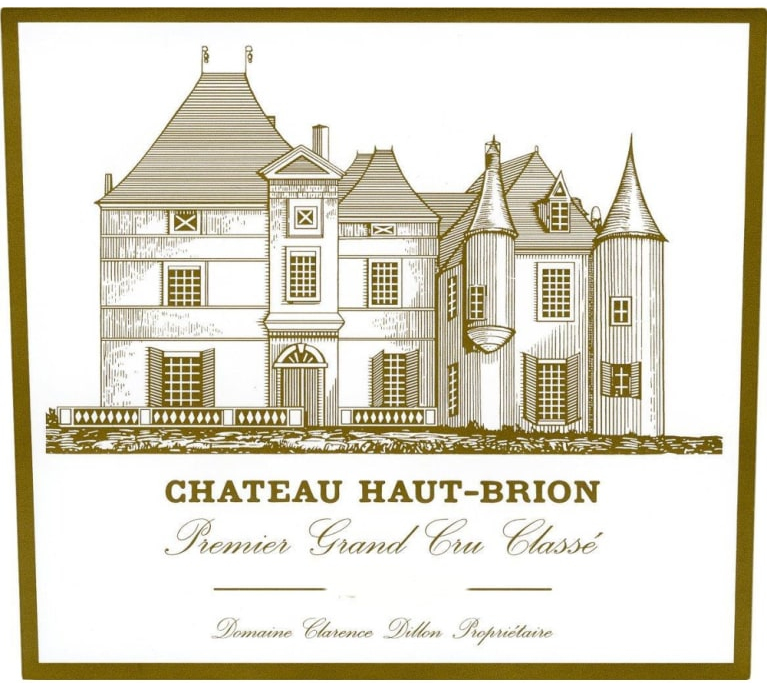Château Haut-Brion 1990
Review of the Estate
Château Haut-Brion is notable for its First Growth status, under both the 1855 and 1973 Mèdoc classifications, despite its geographical location in Graves. This mark of respect is due to the obsession with quality and continual winemaking improvements that have been the dominant modus operandi at Chateau Haut Brion over the past four centuries.
The modern estate grew from humble origins as a property known as Maison Noble d'Aubrion which was acquired by Jean de Pontac through his marriage to Jeanne de Bellon in 1525.
Pontac was responsible for expanding Chateau Haut-Brion, and creating an international market for the wines, the quality of which was noted by Samuel Pepys who wrote in April 1663,"here I drank a sort of French wine, called Ho Bryan, that hath a good and most particular taste that I never met with." However, Chateau Haut Brion was still known formally as Château Pontac until the late 18th Century when it eventually passed out of the Pontac family's hands.
As the first recorded First Growth to be imported into the United States, when Thomas Jefferson purchased six cases during his travels and sent them back to his home in Virginia, it is perhaps unsurprising that Chateau Haut-Brion was eventually purchased by an American. After a string of owners, financier Clarence Dillon acquired the estate in 1935. Chateau Haut Brion is currently owned by Domaine Clarence Dillon, which is a limited company and thereby prevents excessive divisions of the estate between successive generations. Presently, Prince Robert of Luxembourg is at the helm, with Jean-Philippe Delmas managing the viticultural aspects of the business.
As a First Growth, there is constant pressure to produce outstanding yet consistent wines and Château Haut-Brion has consistently embraced new technologies to meet this standard. In the 1960s, the estate pioneered the installation of stainless steel vats - the first of the First Growths to do so. This increased the reliability of the vinification process and positioned Chateau Haut Brion at the forefront of innovation in the Bordeaux region, producing a savoury wine which is both rich and intricate.

Vineyard
Surface area: 106.7 acres
Grape Varieties: 45% Cabernet Sauvignon, 37% Merlot and 18% Cabernet Franc
Average age of vines: 36 years
Density of plantation: 8,00 vines per hectare
Average yields: 35-45 hectoliters per hectare
Average cases produced: 11,000 per year
Plateau of maturity: 10 - 40 years
Château Haut-Brion 1990 Reviews / Tasting Notes
Robert Parker - The Wine Advocate
Point Score: 98
1990: In terms of the brilliant complexity and nobility of the aromatics, scorched earth, black currants, plums, charcoal, cedar, and spices, the 1990 offers an aromatic explosion that is unparalleled. It is always fascinating to taste this wine next to the 1989, which is a monumental effort, but much more backward and denser, without the aromatic complexity of the 1990. The 1990 put on weight after bottling, and is currently rich, full-bodied, opulent, even flamboyant by Haut Brion's standards. It is an incredible expression of a noble terroir in a top vintage. While it has been fully mature for a number of years, it does not reveal any bricking at the edge, and I suspect it will stay at this level for another 10-15 years ... but why wait? It is irresistible now.
Wine Spectator
Point Score: 96
The essence of Graves, with great concentration but no rough edges. The fruit and tannins are rich yet fully integrated, and the tobacco and cedar notes are classic for this estate. Best after 2000. 12,000 cases made.
Vintage Tastings
Point Score: 95
The fourth wine was my wine of the flight, and my note started off with the universally accepted .Mmmmmm.. The nose was deep and inviting, with great cassis, cedar, mineral and smoke aromas, and great nuts too. There.s a bad joke to be made there, but I digress. The palate was consistent with the nose and had a long, fine finish. This wine was clearly a thoroughbred, and the finish exploded in one.s mouth after it went down the hatch, lingering